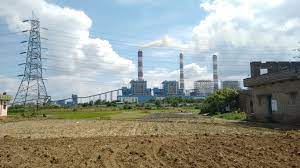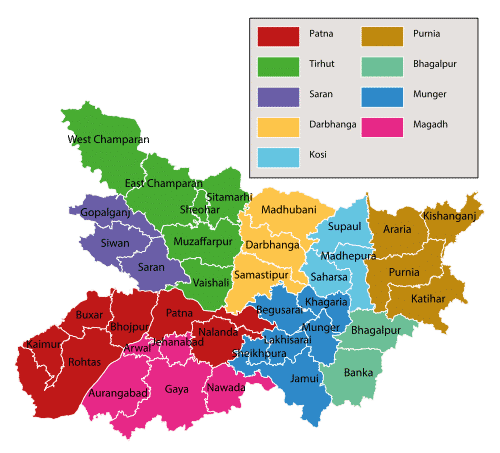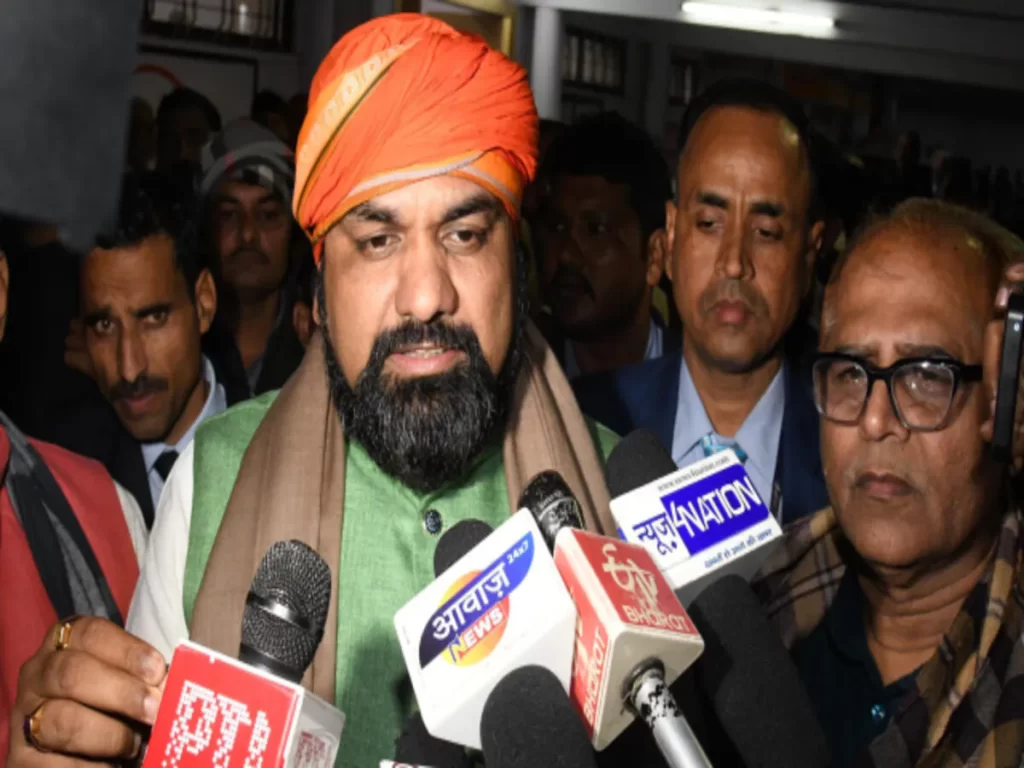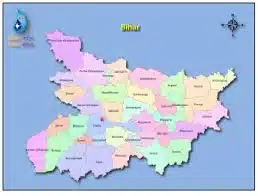Bihar Industrial Investment Promotion Policy (BIPP), 2016
The Government of Bihar is committed for the inclusive economic development of the State. Though the state is primarily an agrarian state but contribution of secondary sector i.e. industries, in inclusive economic development of the state is of equal importance and therefore can‘t be ignored.
The State Government has taken a series of measures to further improve the investment climate in the state and envisages achieving the industrial development growth rate of 15% per annum. This means, increase contribution of secondary sector in the GSDP to more than 25% in line with the National Manufacturing Policy and ―Make in India initiative.
To achieve this goal the State Government has formulated the Industrial Investment Promotion Policy, 2016.
- The main strategy for achieving the goals of this policy is to focus on development of support infrastructure, prioritizing core sectors of future development with emphasis on advanced technology, skill development, a modified structured package of assistance and balanced regional development i.e. uniformly extending the benefits of investment to all geographical areas of the State.
- This policy also focuses on uplifting the socially marginalised groups & women entrepreneurs by offering specialized package of assistance to them.
- The policy has well-defined provisions for effective implementation, monitoring & grievance redressal for the entrepreneurs.
- Thus the Industrial Investment Promotion Policy, 2016 has an integrated approach towards industrial development in the state and offers a wide range of benefits to the investors coming to Bihar.
Factors favouring for private investment in the state :
- Bihar is one of the fastest growing states in India. During the period 2005-06 to 2014-15, the GSDP of Bihar at constant prices grew annually at 10.5 percent, which is one of the highest among all major Indian states.
- Bihar has a unique location specific advantage because of its proximity to the vast markets of eastern and northern India, access to ports such as Kolkata and Haldia and to raw material sources and mineral reserves from the neighbouring states.
- Bihar is primarily an agrarian state and is one of the largest producers of vegetables and fruits in India. Bihar is endowed with water resources – both ground and surface water– as it receives an average rainfall of 1009 mm each year. Ganga is the main river that flows through the state, joined by tributaries that originate in the Himalayas. Some of the other major rivers are Saryu, Gandak, Budhi Gandak, Bagmati, Kamla and Mahananda.
- The state has a large base of cost effective, industrial labour, making it an ideal destination for a wide range of industries.
- Food processing, dairy, manufacturing, healthcare are some of the fastest growing industries in the state.
- The State has planned initiatives for the development of other sectors such as agricultural implements and small machine manufacturing, tourism, information technology, renewable energy etc.
- The State Government has resolved to connect the capital city of Patna to the remotest areas in the state, so that people can reach the capital within a maximum of six hours from any place. The total length of the State Highways (SH) is 4253 km (in 2015) and approximately 65% of these highways are double-lane roads. The total length of National Highways in the state is 4595 km (as of 2015) and efforts are being made to further increase the network at a rapid pace.
- Golden Quadrilateral Highway that passes through Bihar is in close proximity to some of the districts, viz. Kaimur, Sasaram, Aurangabad Gaya & Patna.
- It provides connectivity to major industrial, agricultural, and cultural centres of India. The length of Golden Quadrilateral Highway that passes through the State, i.e. 204 km, has been widened.
- Eastern Dedicated Freight Corridor passes through the state and would connect Bihar with West Bengal, Jharkhand, Uttar Pradesh, Haryana and Punjab and is expected to be immensely beneficial for industries in the state.
- It is targeting to achieve a total generating capacity of 1330 MW by 2016-17, 3310 MW by 2017-18 and 7270 MW by 2021-22. In order to turn its vision into reality, Bihar State Power Generation Corporation Limited (BSPGCL) has entered into joint ventures with reputed companies in the power sector, like National Thermal Power Corporation (NTPC) and National Hydro Power Corporation (NHPC). Some of the major power sector projects, at different stages of commissioning, are Nabinagar Stage-1 Plant, power projects in Buxar, Bhagalpur, Lakhisarai and Banka.
- The State Government, in the last few years, have sanctioned a sum of INR 1650+ crore to Bihar Industrial Area Development Authority (BIADA), for land acquisition to ensure rapid creation of the land bank and industrial areas.
- Strong emphasis is being placed on Micro, Small and Medium Enterprises (MSME). Cluster based development is being promoted by the State Government and it is in the process of setting up specialized clusters for development of leather, small machinery, plastics, garments, jute & textiles, and food processing to boost the manufacturing sector and well-being of MSME entrepreneurs.
The present policy aims at creating industry-friendly environment for maximizing investment, especially, in priority sectors i.e. food processing; tourism; , small machine manufacturing; IT, ITeS, electrical and electronic hardware manufacturing; textile; plastic and rubber; renewable energy; leather and technical education sector.
Mission of Bihar Industrial Investment Promotion Policy, 2016
- Achieve industrial development growth rate of 15% per annum
- Increase contribution of the secondary sector to the GSDP to more than 25% in line with the National Manufacturing Policy and ―Make in India‖ initiative
- Create direct employment opportunities for 5 lakh people across all economic sectors
- Attract on-ground investment of Rs.15,000 crore
- Create high-end infrastructure facilities to attract investments in the state
- Eradicate regional industrial imbalance by uniformly extending the benefits of investment to all geographical areas of the state
- Provide relatively more economic benefits to the priority sections of society such as SC/ST, women, differently abled, war widows, acid attack victims and third gender entrepreneurs.
- Ensure that industries facilitate skill development of local people, so as to achieve the target of 15 million skilled youths as per the ―Seven commitments‖ of the State Government.
- Increase the competitiveness of MSMEs and adoption of ―Zero Defect Zero Effect‖ manufacturing practice
Strategy of Bihar Industrial Investment Promotion Policy, 2016
- Encouraging investments that add value to the farm produce and increase the income of the cultivators through processing and preservation of food crops, particularly vegetables and fruit crops.
- Utilising the traditional skills of artisans by finding a wider market for handloom and handicrafts.
- Investing in skill development and technical education so as to make Bihar the preferred source for skilled manpower – for which an acute shortage has been forecasted not only in different parts of the country but even markets abroad.
- Creating preference for Micro, Small and Medium Enterprises (MSME) in view of their limited requirement of land, and their capacity to absorb more labour per unit of capital and energy.
- Encouraging cluster development in MSME sectors.
- Emphasising on industries that rely on local production, local skills, and local consumption.
- Providing preference to low energy and non-polluting industries
- Encouraging large scale industrial units in the proposed Integrated Manufacturing Cluster under the proposed Amritsar-Kolkata- Industrial Corridor (AKIC). While, the State Government will assist investors in finding suitable land for setting up units, they will be expected to find land on their own for units outside these designated areas.
- Encouraging new investment in developing heritage tourism for which the state offers tremendous opportunities.
- Investments in developing new facilities and/or managing existing facilities under PPP mode will be encouraged.
- Promoting development of ancillary units to cater to the upcoming investments in public and private sector
- Establishing the Udyog Samwad Portal, a one stop platform for investors to resolve problems/ difficulties faced in establishment of industrial projects in the State.
Priority Sectors
Bihar enjoys a natural advantage in some sectors like food processing, leather, tourism, etc. and the State Government would like to leverage upon these advantages to ensure maximum employment generation and improve the standard of living of the people.
Food Processing Sector
Bihar, fundamentally an agrarian economy, has a large agricultural and animal production base offering abundant supply of raw material to be processed for human consumption. Despite these natural advantages, the level of food processing is very low and there is scope to improve the food processing levels to meet the increasing requirements of the state‘s growing population, while at the same time offering a sustainable consumption market. Some of the strategic advantages in this sector are given below :
- The production level of cereals in the state has grown annually at 5.65% in the last 5 years i.e. 2010-11 to 2014-15.
- Bihar has the highest maize productivity amongst all the Indian states.
- Bihar ranks first among all the Indian states in terms of vegetable production.
- The state is well known- in India and in international markets – for its litchi produce, which presents a potential opportunity to set up units for litchi pulp, juice, pulp slab, nectar, jam, jelly, etc.
- Makhana/Gorgon Nut is an exclusive offering of the state and has a strong potential to be placed in the wellness food category and can fetch premium pricing if marketed, appropriately.
- Makhana/ Gorgon Nut is quite nutritive and compares well with fish/ mutton in terms of protein content. In China, raw makhana seed powder is considered to be an essential ingredient of baby food.
- Approximately 52% of the total livestock population is that of milch animals, with a cow population of 122.31lakh, goat population of 121.53 lakh and buffalo population of 75.67 lakh.
- Large population of buffalo, goat and poultry presents a significantly large opportunity for meat processing.
- Bihar is the 4thlargest producer of honey in the country and produces approximately 6,500 tonnes per annum. Honey is becoming an important ingredient in today‘s world and is placed in the wellness food category. This product has the potential to be the first choice amongst the 1st generation entrepreneurs due to low investment requirement and higher revenue potential.
Tourism Sector
Bihar has a potential for tourism in view of its rich cultural heritage, religious and historical monuments. Bihar‘s great competitive strength from tourism point of view is its ancient and yet living civilization that gave rise to two of world‘s great religions, namely Buddhism and Jainism. Bihar has been the centre of religious activities of Hindus, Buddhists, Jains, Sikhs and Muslims.
- Tourism in Bihar has traditionally thrived upon travellers visiting places of spiritual interest. Some of the identified tourism circuits focussing on this aspect are: Buddha Circuit, Sufi Circuit, Jain Circuit, Ramayan Circuit, Shakti Circuit, Sikh Circuit, Gandhi Circuit, Shiv Circuit, Mandar and Ang Circuit, Kanwariya Route.
- Bihar has a vast array of protected monuments, world heritage sites and several other sites, like the ruins of Nalanda and Vikramshila (oldest universities in the world), which have the potential of being world heritage sites.
- Art and crafts of Bihar could help develop and promote rural tourism and extend the socioeconomic benefits of tourism to rural areas. For example, villages engaged in Tehta (Jehanabad), Nepura (Nalanda), Ranti and Jitwarpur (Madhubani), Patharkatti (Gaya), Nathnagar (Bhagalpur) etc. could be targeted for development of rural tourism.
- “Wellness Tourism” based on yoga and aqua therapy using sulphur water from hot water springs in Rajgir and Munger can be promoted. This has the potential to be Bihar‘s most unique tourism offering, with holistic healing and rejuvenation of the individual from every dimension- physical, mental, and spiritual.
- Bihar has unique events, fairs and festivals like Sonepur fair, Chath festival, Saurat Sabha, Rajgir festival and Boudh festival, all of which have the potential to attract domestic as well as international tourists, upon development of adequate facilities.
- Film shootings at tourist destinations in Bihar should be further encouraged through single-window clearances along with necessary incentives, as provided for under the relevant government notifications.
Small Machine Manufacturing Sector
- Agriculture is the mainstay of the economy of Bihar. However, high cost of agricultural practices and low productivity of crops has been an issue.
- The focus is on zero tillage machines which are more suitable for farmers with small and marginal land holdings.
- Because of easy availability of incentive and progressive outlook of the farmers, use of latest equipment is now becoming common in the state.
- The increase in electrification has led to increase in usage of electrical pumps and electricity based farm equipment.
- Looking at this growing domestic consumption market and the lack of investment in this sector in the state till date, Government of Bihar has categorized the small machine manufacturing sector related to agriculture as one of the priority sectors in the industrial investment promotion policy.
IT, ITeS, Electrical and Electronic Hardware Manufacturing Sector
- The importance of IT/ITeS sector is not that of a standalone sector, rather as an integral part of other industries.
- It has been established now that the growth in IT/ITeS sector would spur further growth in the fields of agriculture, education, healthcare, energy, telecommunication, rural development, tourism, textile, etc.
- The sector is yet to take off and move in the desired direction with a pace that offers potential for many entrepreneurial ventures and start up units.
- The availability of educated youth and cheap labour in the state pose a clear advantage to the investment in this sector, in the state.
- The State Government has also notified land for two IT Parks at Bihta (Patna) and Rajgir.
Textile Sector
The textile sector plays a key role in the Indian economy by way of significant contribution to GDP, manufacturing output, employment generation, and export earnings. The sector contributes 14% to industrial production, 4% to India‘s GDP and constitutes 13% of the country‘s export earnings. The textile sector is one of the largest source of employment generators in India; it employs over 4.5 crore people, directly.
- Tassar silk of Bhagalpur is an exclusive product of Bihar which has the potential to fetch premium prices.
- Jute is another fibre product produced in the state. Bihar produced around 1420 thousand tonnes of jute in 2014-15.
- Textile industry is a highly labour-intensive industry. Bihar is home of around one lakh weavers for whom manufacturing and dealing with fabric and garment is their livelihood. The presence of weavers‘ community is, therefore, an important asset base in terms of availability of skilled and semi-skilled workers for textile units. Apart from the regular weaver community, a large number of youths (especially, the female youth) in the state can be employed in the textile manufacturing units which can offer conducive employment opportunities such as sewing, stitching, cutting, and other tailoring requirements.
Plastic and Rubber Sector
- Plastic and rubber are versatile products used for everything from packaging other products to life sustaining equipment used in hospitals.
- Though the land is very fertile, the farmers are affected with problems of low productivity and low return on investment, primarily, due to high dependence on monsoons.
- Plasticulture applications have the potential to offer them the much needed solution to improve productivity and reduce dependence on monsoons and therefore, drive the demand for plastics.
Renewable Energy Sector
- Currently, the state is majorly dependent upon the conventional sources for electricity generation.
- The deficit of electricity poses an enormous constraint for all future development including industries.
- Large power projects have long gestation period, while the demand continues to rise; therefore, the state has a unique opportunity to meet this requirement through rapid deployment of modular RE system.
- Further, there is a potential consumption market for solar off-grid applications such as SPV pumps, solar water heaters, solar street lights, etc. This presents an enormous opportunity to the industries, for setting up units for RE modular product manufacturing, RE projects, etc.
Healthcare Sector
- The public health facilities in Bihar are already overburdened and are in the process of being strengthened in terms of infrastructure and essential health requirements like manpower, equipment, drugs and consumables.
- Investment Opportunities in Specialty hospitals, super-specialty hospitals, multi- specialty hospitals, ultra-modern trauma centres, mobile medical units, blood banks, medicines, medical equipment etc.
Leather Sector
- Leather sector has a massive potential for employment, output growth and export. In India, the sector is one of the top foreign exchange earners.
- Bihar has a huge potential for investment in the leather sector.
- On account of large raw material base (in terms of hides and skins produced in the state), plenty of cheap as well as skilled and semi-skilled labour, and a huge domestic market for consumption, it offers both comparative and competitive advantage to a prospective investor in this sector.
Technical Education Sector
- Because of lack of institutes of higher education and learning in Bihar, thousands of students migrate from the state to other states like Delhi, Maharashtra, Karnataka, Tamil Nadu, Punjab and Rajasthan to pursue their college and university education.
- This leads to missed opportunities for the state as a hub for higher education.
Ease of Doing Business Reform

A series of measures have been taken up to improve the ease of doing business in the state and the emphasis has been on simplification and rationalization of the existing rules/procedures for hassle free entry & operation of business units across the state.
A brief summary of some of the key ease of doing business‘ reforms is given below:
- The Udyog Samwad Portal (www.udyog.bihar.gov.in) – A one stop platform for investors”’ provides information on acts/rules/policies published by all relevant departments of the state.
- Labour related reforms :
- Online application for registration and licenses (including renewal) under the Factory Act & other labour laws.
- Well defined inspection procedures, including online risk based differential compliance inspection of registered units including automatic allocation of inspectors, etc.
- Tax Related Reforms : Online application for Value Added Tax, Professional Tax, Entry Tax, Entertainment Tax & Luxury Tax registration.
- Environment Related Reforms : Online consent management system for Consent to Establish (CTE) and Consent to Operate (CTO) under Water & Air Act; authorization under Hazardous Waste Rules.
The following steps will be taken to facilitate ease of doing business in Bihar:
- Single Window Clearance System: A new and simplified system of single window clearances will be put in place with suitable changes in the legislative framework.
- Provision of Common Application Form (CAF): A Common Application Form (CAF) will be introduced which will ensure coordination among all agencies involved in providing clearance.
- Provision of Programme Management Agency (PMA): The DoI will empanel PMA(s) to provide technical assistance as well as secretarial services to the competent committee in finalising the investment proposals for the approval including monitoring and reporting the progress.
- Amendment in the BIADA Act: The GoB will review the existing Bihar Industrial Area Development Authority Act, 1974 and amend it to further strengthen the legal framework for planned development of industrial areas.
- Inclusion of industry related services under the Bihar Right to Public Services Act, 2011: In order to ensure accountability for timely processing of requests, additional investor-related services will be included under the Bihar RTPS Act.
- Provision of Self certification: The new single window system will have provisions for self-certification with random check by the statutory authorities after commencement of production.
- Rationalisation of rules & regulations: Considerable rationalization of labour law compliances has been implemented in the state.
- Monitoring & Grievance Redressal System: The grievance redressal in regard to this policy will be done under the purview of the Bihar Lok Shikayat Nivaran Adhikar Adhiniyam, 2015.
Negative list of industries
- The following units will not be eligible for any support under this policy:
a. Units manufacturing narcotic drugs
b. Units manufacturing alcoholic beverages
c. Tobacco based industries
d. Units manufacturing asbestos
The above list will be called the negative list under the policy. - The State Government shall have the right to decide whether a unit falls under the negative list and can modify the above list accordingly.
- As a general principle, any industry which impacts the environment adversely will be discouraged by the State Government for investment. Such industries will not be eligible for any incentive under this policy and be placed in the above mentioned negative list.
Also refer :
- Top 50 Science MCQs For Competitive Exams
- Know About The Different Financial Sector Regulators In India





